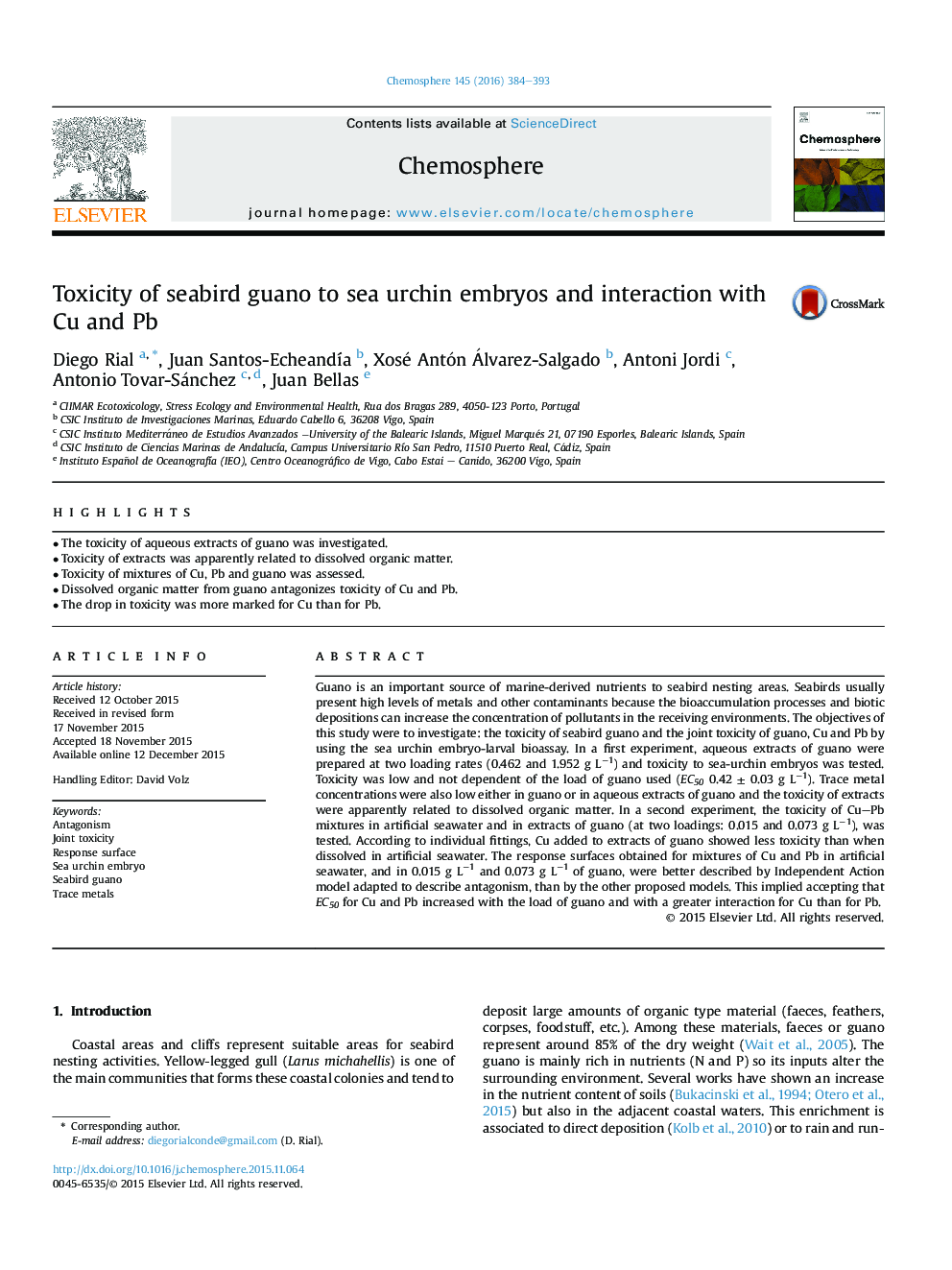| Article ID | Journal | Published Year | Pages | File Type |
|---|---|---|---|---|
| 6307106 | Chemosphere | 2016 | 10 Pages |
Abstract
Guano is an important source of marine-derived nutrients to seabird nesting areas. Seabirds usually present high levels of metals and other contaminants because the bioaccumulation processes and biotic depositions can increase the concentration of pollutants in the receiving environments. The objectives of this study were to investigate: the toxicity of seabird guano and the joint toxicity of guano, Cu and Pb by using the sea urchin embryo-larval bioassay. In a first experiment, aqueous extracts of guano were prepared at two loading rates (0.462 and 1.952 g Lâ1) and toxicity to sea-urchin embryos was tested. Toxicity was low and not dependent of the load of guano used (EC50 0.42 ± 0.03 g Lâ1). Trace metal concentrations were also low either in guano or in aqueous extracts of guano and the toxicity of extracts were apparently related to dissolved organic matter. In a second experiment, the toxicity of Cu-Pb mixtures in artificial seawater and in extracts of guano (at two loadings: 0.015 and 0.073 g Lâ1), was tested. According to individual fittings, Cu added to extracts of guano showed less toxicity than when dissolved in artificial seawater. The response surfaces obtained for mixtures of Cu and Pb in artificial seawater, and in 0.015 g Lâ1 and 0.073 g Lâ1 of guano, were better described by Independent Action model adapted to describe antagonism, than by the other proposed models. This implied accepting that EC50 for Cu and Pb increased with the load of guano and with a greater interaction for Cu than for Pb.
Related Topics
Life Sciences
Environmental Science
Environmental Chemistry
Authors
Diego Rial, Juan Santos-EcheandÃa, Xosé Antón Álvarez-Salgado, Antoni Jordi, Antonio Tovar-Sánchez, Juan Bellas,
